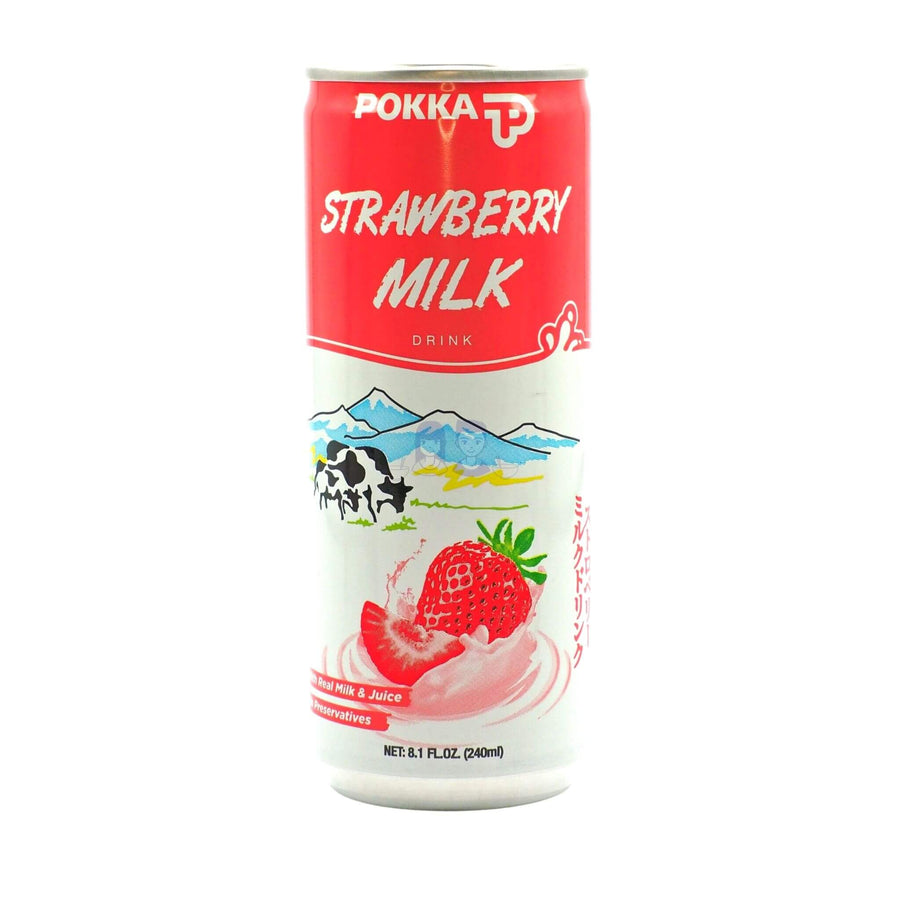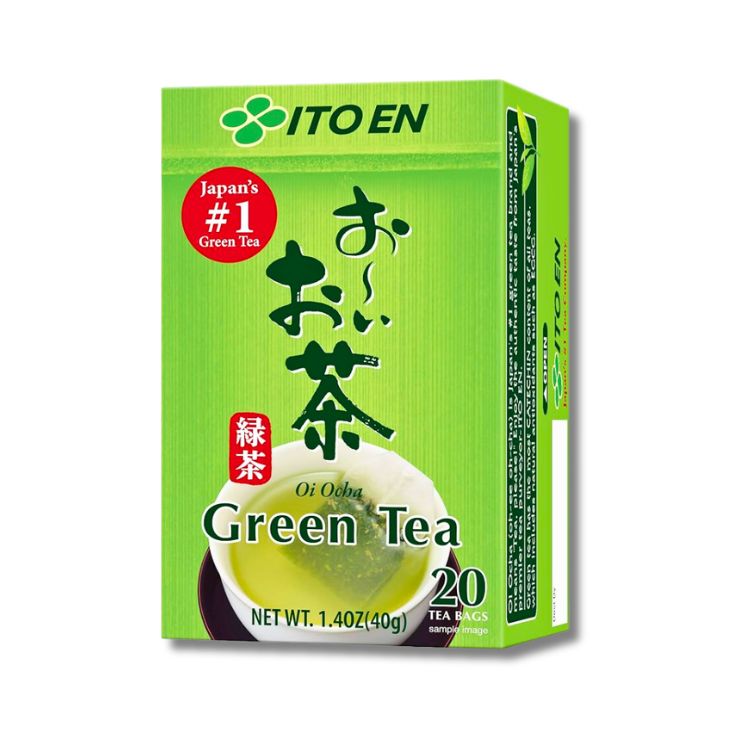What Is Japanese Tea? Types, Styles and Benefits
Japan is famous for many things, one of them being its high-quality tea. From the tranquil gardens of Kyoto to busy Tokyo cafés, tea culture is woven into daily life. People around the globe love Japanese tea for its refreshing taste, wellness benefits, and the mindful rituals that surround every cup.
But did you know that there are dozens of Japanese tea varieties out there? Below, we’ll explore some of the most popular ones, including several of our favourites, which we love to have with a bite of mochi cake.
→ Shop now: Our handpicked range of Japanese Teas
Japanese Green Tea Variants
Green tea originates from the leaves and stems of the Camellia sinensis tea plant. It typically is sweeter and softer in taste compared to other teas, such as black and oolong teas, which are made through different withering and oxidation processes. In Japan, most green tea varieties use leaves that have been harvested by hand and dried using steam.
#1 Hojicha Japanese Green Tea
Hojicha tea is a distinct green tea that has been roasted in a pot to 150 degrees Celsius over charcoal to limit oxidation and give it its light golden colour. It is well known for its hypnotising aroma and high fibre content, which makes it a popular after-dinner tea. It is also frequently sipped by people experiencing digestive problems and is considered one of the best Japanese teas for digestion, boosting metabolism and fighting colds.
#2 Matcha Japanese Green Tea
As one of the most popular Asian drinks, Matcha has been gaining worldwide popularity over the last few years and is popular for its complex flavour profile, which includes a sweet nuttiness and a slightly bitter aftertaste. You can quite easily distinguish matcha from other Japanese teas due to its bright green colour when in powder form. As one of our favourite Japanese tea varieties and soft drinks, you can find matcha in a variety of products, including bubble tea, drinks, desserts, and, surprisingly, skincare! Delving deeper into its properties, the health benefits of Matcha are also vast, ranging from enhanced metabolism, improved cognitive function and even weight loss.

#3 Sencha Japanese Green Tea
You can certainly make a strong argument for Sencha being the number one Japanese tea variant, with some research claiming that it makes up 80% of total tea consumption in Japan. It has a soothing grassy scent with a balanced flavour, making it the perfect cup to start the day with.

#4 Gyokuro Japanese Green Tea
Going from a widely-produced tea to one of the most exclusive, Gyokuro is considered by many to be one of the highest quality Japanese teas out there. It is trickier to produce as it has to be shielded from the sun for 20 days before harvesting. If you do manage to get your hands on some high-quality Gyokuro, then you can expect it to produce an exquisite cup of refreshingly sweet tea.
#5 Kabusecha Japanese Green Tea
Falling somewhere between Gyokuro and Sencha in terms of rarity, quality, and price, Kabusecha is a terrific choice to go for if you want to drink good quality tea without a hefty price tag. It has a rich, buttery taste that is surprisingly very addictive.
#6 Tencha Japanese Green Tea
Similar to Gyokuro and Kabusecha, Tencha is produced by covering the tea leaves to increase shade. This tea is usually ground and sold in powder form, similar to matcha, which is why it is called 'Tencha'. In Japanese, 'ten' means 'to grind' and 'cha' means 'tea'.
#7 Shincha Japanese Green Tea
Shincha is a top-of-the-drawer tea that is gathered during the first harvest of Sencha in early spring. It has a nice, sweet note to its flavour profile and almost no bitterness at all. Due to Shincha’s quality and low availability, you will have to pay a pretty penny to get your hands on this seasonal tea.

#8 Mecha Japanese Green Tea
Avoiding waste is heavily entwined in Japanese culture, and Mecha perfectly embodies this. It is made from the fine-tipped buds usually left over from the final processing stage of Gyokuro and Sencha. Those trying this tea out should be prepared for its extremely strong flavour.
#9 Kukicha Japanese Green Tea
Another excellent example of waste avoidance, Kukicha is made from the young stems and twigs that are separated from tea leaves during the production of other tea variants. The lack of tea leaves means that this tea has a super low caffeine content. Also, some people like to mix Kukicha with Matcha to create a tea combination with a highly distinct taste and scent.
#10 Bancha
Many Japanese view Bancha as the best tea for everyday drinking. It is seen as a lower-grade tea when compared to sencha, but the trade-off is deemed to be well worth it due to Bancha’s low price. This tea is made using the upper shoots of tea bushes that are gathered during late-year harvests.
#11 Genmaicha Japanese Green Tea
Genmaicha is a great option for kids due to its very low caffeine content. This aromatic tea is made by mixing Bancha, Sencha, and roasted brown rice to create a delectable nutty flavour.
#12 Konacha Japanese Green Tea
If you have ever been to a sushi restaurant and drank tea while you were there, you likely drank Konacha. This tea has been a favourite among sushi restaurants for decades due to its strong flavours that perfectly counteract the bad breath you often get after eating raw fish.

#13 Kamairicha Japanese Green Tea
Similar to Chinese teas, Kamairicha is roasted using a kettle rather than steamed like most other Japanese teas. This process halts the oxidation. Unsurprisingly, Kamairicha’s fragrance and flavour profile closely mirror popular Chinese teas.
#14 Tamaryokucha Japanese Green Tea
Also known as Guricha, Tamaryokucha leaves are curly in appearance. This is caused by the unique drying process that they go through. It has a nice neutral taste with zero bitterness, which makes it great for drinking while eating very savoury food.
Other Japanese Tea Variants
There are some great-tasting Japanese teas which aren't considered green tea. Here we talk about some of the most popular.
#15 Mugicha Japanese Tea
A very popular cold-served Japanese tea for the summer months, Mugicha is made by roasting barley grains. It has a nice full-bodied flavour with a note of bitterness, very similar to coffee but minus the high caffeine dose (Mugicha is caffeine-free). Those who dislike bitter drinks can add syrup or sugar to their cups. Mugicha is also often considered one of the best Japanese teas for digestion and weight loss.

#16 Wakoucha Japanese Black Tea
Translating literally to “black tea”, Wakoucha is very similar to Chinese and Indian black tea. It was first cultivated in Japan in the early 20th century, meaning that its history in the country is relatively short compared to other Japanese teas. This is also why Wakoucha is not as widely consumed there.
#17 Gobocha Japanese Tea
Burdock root is often used in Japanese cuisine, and the premium versions of it are steamed and roasted to make Gobocha. This tea has been gaining a lot of popularity in recent years due to its rumoured anti-ageing qualities.
Key Tea-Growing Regions in Japan
When you see labels like “Uji Matcha” or “Shizuoka Sencha,” the place name isn’t just for show—it hints at the terroir and craftsmanship behind every leaf.
Shizuoka – Produces around 40 % of Japan’s tea, offering bright, grassy Sencha with a clean finish.
Uji (Kyoto) – Historic birthplace of Matcha and Gyokuro; mist-covered hills create deep umami and vivid jade hues.
Kagoshima – Warm climate and volcanic soil yield early-harvest Shincha and organic teas noted for gentle sweetness.
Tip: Look for these region names on our product pages to pick teas that match your flavour preference.
Styles of Japanese Tea
The easiest and most common way to make Japanese tea is to brew it directly in your teacup or teapot, where you insert the tea leaves and pour hot water. Restaurants and Japanese tea houses usually do this in teapots or kettles to create large batches quickly. Alternatively, you can also crush and grind the tea leaves before brewing.
How to Brew Japanese Tea
Brewing Japanese tea is an art that balances water temperature, steeping time, and the quantity of tea leaves. Here's a basic guide:
-
Water Temperature: Different teas require different temperatures. For instance, Sencha is best brewed at 70-85°C, while Matcha requires slightly hotter water, around 80-90°C.
-
Tea Quantity: Typically, for one cup (approximately 250ml), you'd use 2 grams or one teaspoon of tea leaves.
-
Steeping Time: This varies with the tea type. Sencha, for instance, requires about 1 minute, while Gyokuro is usually steeped for a longer 2-3 minutes. Note: Over-steeping can lead to bitterness.
-
Second Infusion: Most high-quality Japanese teas can be brewed 2–3 times. Shorten the second steep to 15–30 seconds to unlock deeper umami without added bitterness.
-
Method:
- Pre-warm the teapot and cups with hot water.
- Add the tea leaves to the pot.
- Pour in the water at the desired temperature.
- Let the tea steep for the required time.
- Pour the tea into cups, ensuring each cup gets an equal strength by moving the pot side to side as you pour.
Health Benefits of Japanese Tea
Whether you favour grassy Sencha or roasted Hojicha, Japanese teas share a powerful blend of catechins (antioxidants) and L-theanine that can boost focus, support heart health, and promote a sense of calm.
Many of the health benefits of Japanese tea stem from its abundance of antioxidants. These compounds help protect your cells from oxidative damage and thus reduce your risk of developing cancer.
Studies have also found that Japanese tea can help prevent type 2 diabetes by increasing your insulin sensitivity and cutting your blood sugar levels. Other health benefits of Japanese tea include improving oral health, helping in losing weight, protecting your brain from ageing, and many more!
What is a Japanese Tea Ceremony?
The Japanese tea ceremony, known as 'Chanoyu', 'Sado', or 'Chado', is a ritualistic preparation of Matcha, a powdered green tea. This ceremony is a blend of many Japanese art forms and has been deeply influenced by Zen Buddhism. The tea ceremony is not just about drinking tea but about understanding the concepts of harmony, respect, purity, and tranquillity.
There are several intricate steps to the ceremony, from selecting tea utensils to making and serving the tea. The environment, typically a tea room or tea house, plays a crucial role. Everything, from the calligraphy on the walls to the flowers placed in the room, is carefully chosen to contribute to the theme of the ceremony.
The central philosophy of the tea ceremony is 'ichi-go ichi-e', which can be translated as "one time, one meeting". It emphasises the uniqueness of the moment and encourages participants to cherish every encounter as it will never recur in the same way again.

Final Word
From everyday Bancha to luxurious Gyokuro, there’s a brew for every mood and budget that can both invigorate your body and maintain your health in the long term. Since each variant has different characteristics, we suggest you give all of them a try to find the ones which you enjoy the most!














